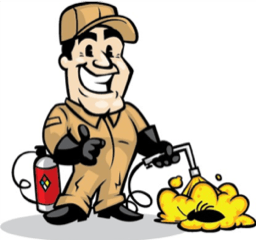Radon Gas Testing
Radon comes from the natural (radioactive) breakdown of uranium in soil, rock and water and gets into the air you breathe. Radon can be found all over the U.S. It can get into any type of building — homes, offices, and schools — and result in a high indoor radon level. But you and your family are most likely to get your greatest exposure at home, where you spend most of your time. Radon is estimated to cause many thousands of deaths each year. That's because when you breathe air containing radon, you can get lung cancer. In fact, the Surgeon General has warned that radon is the second leading cause of lung cancer in the United States today.
Only smoking causes more lung cancer deaths. If you smoke and your home has high radon levels, your risk of lung cancer is especially high. Testing is the only way to know if you and your family are at risk from radon. EPA and the Surgeon General recommend testing all homes below the third floor for radon. EPA also recommends testing in schools.
How Radon Gets Into the Home
Radon is a radioactive gas. It comes from the natural decay of uranium that is found in nearly all soils. It typically moves up through the ground to the air above and into your home through cracks and other holes in the foundation. Your home traps radon inside, where it can build up. Any home may have a radon problem. This means new and old homes, well-sealed and drafty homes, and homes with or without basements. Radon from soil gas is the main cause of radon problems. Sometimes radon enters the home through well water (see "Radon in Water" below). In a small number of homes, the building materials can give off radon, too. However, building materials rarely cause radon problems by themselves.
EPA Recommendations
Test your home for radon -- it's easy and inexpensive.
A radon mitigation system should be installed if your radon level is 4 picoCuries per liter (pCi/L) or higher. Radon levels less than 4 pCi/L still pose a risk, and in many cases may be reduced. Both the DEP and EPA recommend testing your home for radon every two years to monitor your levels.
When was the last time you tested your home for radon?
Contact us today to schedule your radon test and make sure you are not being exposed to this harmful gas!








